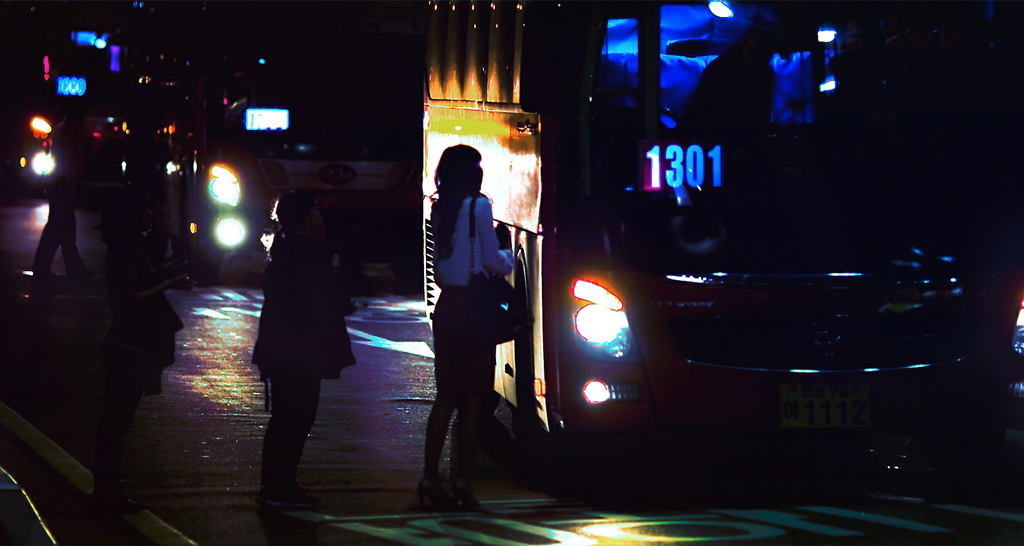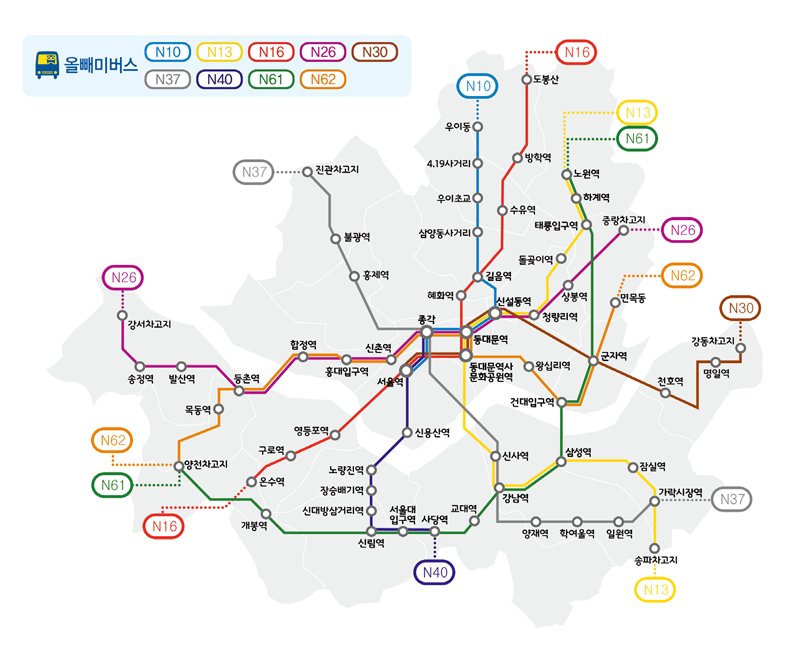Using Cell Phone Data to Plan Late Night Bus Routes in Seoul
DATA
In collaboration with the Korean telecom company KT Corporation, Seoul’s metropolitan government analyzed call data to determine optimal routes for its late night buses
IMPACT
Since 2012, Seoul’s “Owl Bus” service has saved the city’s lower-income groups impact approximately $1.2 million by providing more affordable transportation data using cell phone data to plan late night bus routes in Seoul

Photo: N.O.R.E., “Untitled,” Seoul, Korea. Accessed from http://flic.kr/p/dQsrM7. Creative Commons BY-NC-ND license obtained; available at https://creativecommons.org/licenses/by-nc-nd/2.0/. Used with permission.
In Seoul, South Korea, where the metro system shuts down from midnight to 5 am, there is great demand for late night bus service. With budget constraints limiting the number of late night routes the city could create, new bus routes must service as many passengers as possible. To help determine where to locate the new lines, the Mayor’s office and the telecom company KT Corporation used late night phone call data to analyze human movement. With this information, the city was able to implement bus service along the nine most heavily trafficked late night routes.1
Benefits to Low-income Groups
Call records analyzed by the Data and Statistics division of Seoul’s Metropolitan Government led the city to improve various routes originally created using traditional planning techniques. Lower-income groups especially benefited from these reforms. Ride costs are now roughly $1.50 to the outer boroughs, a steep reduction from the previous average fare of over $10. Seoul’s municipal government estimates that roughly $1.2 million were redistributed to poorer income groups as a result of this new service.
Environmental Impacts of Urban Transport Reform
The provision of late night bus trips for 7,000 nightly riders in Seoul translates not only to more affordable transport, but also saves the city approximately 2.3 million car trips per year.2 Because regulated public buses such as those used in Seoul emit about 80 percent less carbon monoxide than a private car, improved public transport efficiency has benefits for public health and the environment.2
Positive Outcomes for Women
In addition to the benefits of these changes for workers with night shifts and students who study late at university libraries, recent surveys showed a third group affected positively by this new service: women traveling alone. The Owl Bus service made women’s security a priority, adding good lighting in the buses and planning routes along well-lit areas. As a result, 12 percent more women report feeling safe returning home during late night hours, as compared to before the service was created.5

Graphic: From Seoul Metropolitan Government. Accessed from http://egloos.zum.com/deltaeagle/v/5773094.
References
1. Kim, Ki-Byoung. 2015. Interview by Cheney Wells. Phone interview. March 19, 2015.
2. Author’s calculations.
3. Cooper, Erin, Arioli Magdala, Aileen Carrigan, and Umang Jain. 2014. “Exhaust Emissions of Transit Buses.” World Resources Institute Cities Working Paper. November, 2014. http://www.wricities.org/sites/default/files/Exhaust-Emissions-Transit-Buses-EMBARQ.pdf (accessed March 15, 2015)
4. Kim 2015 (interview).